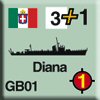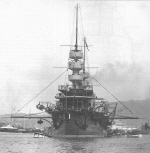|
| | L'Inde construit SNA? |  |
|
+5X07 LE BRETON clausewitz kleinst patzekiller 9 participants | |
| Auteur | Message |
|---|
Invité
Invité
 |  Sujet: L'Inde construit SNA? Sujet: L'Inde construit SNA?  Jeu 25 Aoû 2005, 04:37 Jeu 25 Aoû 2005, 04:37 | |
| Dans le Daily Times de la Pakistan il est un bulletin (en anglais) que l'Inde construit un SNA en secret. Leur origine est un amiral Indien retraité, qui l'a dit en Washington la semaine dernière. |
|   | | Invité
Invité
 |  Sujet: Re: L'Inde construit SNA? Sujet: Re: L'Inde construit SNA?  Jeu 25 Aoû 2005, 07:06 Jeu 25 Aoû 2005, 07:06 | |
| Bah, ca fait dix ans qu'on entend parler. Les gars de DCN et Thales y font un saut de temps en temps (sous couvert de Scorpene bien sur).
Le programme s'appelle ATV. Les russes sont sur le coup aussi. |
|   | | patzekiller
Amiral de la Flotte



Nombre de messages : 1270
Age : 56
Ville : mouans sartoux (06)
Date d'inscription : 16/08/2005
 |  Sujet: Re: L'Inde construit SNA? Sujet: Re: L'Inde construit SNA?  Jeu 25 Aoû 2005, 08:09 Jeu 25 Aoû 2005, 08:09 | |
| on verra ce que ça donne, les premieres generations ont toujours des defauts
_________________
frog of war le e-zine des pousseurs de pions.
www.frogofwar.org
www.strategikon.info
|
|   | | Invité
Invité
 |  Sujet: Re: L'Inde construit SNA? Sujet: Re: L'Inde construit SNA?  Lun 05 Sep 2005, 17:33 Lun 05 Sep 2005, 17:33 | |
| la reponse est NOUI.
ni oui ni non
en fait ils hésitent à se lancer dans cette voie (trop cher) avoir qu'il est tellement facile de louer un SNA russe genre victor III et ainsi d'économiser de couteux frais d'études. |
|   | | kleinst
Amiral de la Flotte



Nombre de messages : 670
Age : 45
Ville : aisne
Emploi : labo
Date d'inscription : 01/08/2005
 |  Sujet: Re: L'Inde construit SNA? Sujet: Re: L'Inde construit SNA?  Ven 09 Sep 2005, 19:38 Ven 09 Sep 2005, 19:38 | |
| J'ai lu récemment que la russie s'aprétait à reprendre la construction de deux SNA de type Akula inachevés pour le compte de la marine Indienne. Je pense que les russes font le forcing pour proposer leur matériel inachevé ou endomagé. Moyen pratique de gagner de l'argent en faisant de la place!  Mais surtout pour conserver ce marché et évité que les indiens n'aillent voir du côté de la conccurence occidentale. _________________  |
|   | | patzekiller
Amiral de la Flotte



Nombre de messages : 1270
Age : 56
Ville : mouans sartoux (06)
Date d'inscription : 16/08/2005
 |  Sujet: Re: L'Inde construit SNA? Sujet: Re: L'Inde construit SNA?  Ven 09 Sep 2005, 21:44 Ven 09 Sep 2005, 21:44 | |
| je partage cette analyse
_________________
frog of war le e-zine des pousseurs de pions.
www.frogofwar.org
www.strategikon.info
|
|   | | clausewitz
Amiral



Nombre de messages : 13087
Age : 40
Ville : Nantes
Emploi : Agent de sécurité
Date d'inscription : 22/12/2005
 |  Sujet: Re: L'Inde construit SNA? Sujet: Re: L'Inde construit SNA?  Mer 28 Déc 2005, 21:54 Mer 28 Déc 2005, 21:54 | |
| je sais pas si c'est pour eviter que les Indiens ayent voir du côté occidental car je vois mal la France vendre des Barracuda, les Anglais des Astute ou les américains des Virginia quand à la vente d'Akula cela me parait possible vu que l'Inde ne menance pas directement la Russie car la livraison massive d'armes russes à la Chine est une arme à double tranchant car les chinois n'ont jamais digéré la perte de territoires en faveur de la Russie
_________________
"Nul officier de marine n'abdique l'honneur d'être une cible (François Athanase Charette de la Contrie alias "Le roi de la Vendée")
|
|   | | LE BRETON
Amiral de la Flotte



Nombre de messages : 7384
Age : 53
Ville : Paris 12ème
Emploi : Fonctionnaire
Date d'inscription : 03/06/2006
 |  Sujet: Re: L'Inde construit SNA? Sujet: Re: L'Inde construit SNA?  Ven 15 Sep 2006, 17:08 Ven 15 Sep 2006, 17:08 | |
| L'Inde annonce disposer d'un réacteur nucléaire opérationnel pour équiper ses futurs SNA. 
_________________
kentoc'h mervel eget bezañ saotret (plutôt la mort que la souillure) devise de la Bretagne.
|
|   | | X07
Lieutenant de vaisseau



Nombre de messages : 2911
Age : 58
Ville :
Emploi :
Date d'inscription : 31/08/2006
 |  Sujet: SNA Sujet: SNA  Sam 18 Nov 2006, 13:08 Sam 18 Nov 2006, 13:08 | |
| Marine Indienne Nucléaire?
Navy capable of making nuclear-powered warships: Officials
NEW DELHI, NOV 14 (PTI)
The Indian Navy, dependent on foreign technology for its warships for long, has developed the capability of designing nuclear-powered vessels and building an indigenous submarine, top naval designers said here today.
The country has "developed the capability" but it was for the government to decide whether or not to go ahead with the building of such strategic vessels, said Capt C S Rao and Commodore RN Vadiyanathan, Principal Directors of the Naval Design Bureau.
Briefing newsmen on the upcoming golden jubilee celebrations of the design bureau -- the only facility of its kind among the three services -- Vadiyanathan said the building of Scorpene-class submarines has begun and from the third submarine onwards, the indigenious content would be scaled up.
The government had cleared a 30-year submarine building programme and after the completion of the Scorpene project, it may decide to go in for an "indegenious underwater vessel", the two top naval designers said.
But they did not not comment on progress in the indigenious nuclear submarine project, christened the Advanced Technology Vessel.
Besides developing capability for building aircraft carriers and submarines, the navy has made immense strides in developing stealth technology that is being used in the three Shivalak-class warships being built at a state-run shipyard, Vadiyanathan and Rao said.
"We have 35 warships in various stages of development. These range from stealth ships to destroyers, frigates, anti- submarine vessels, landing ships for tanks and corvettes," Vadiyanathan said.
One of the most outstanding achievements of the indigenious warship building programme was the development of the Delhi-class of guided missile destroyers with a displacement of 6,500 tonnes. These were among the most potent vessels in the naval strike force.
"We have not rested on our oars," the designer claimed and said work was underway on uprgaded versions on these destoryers, to be called the Kolkota-class.
Both Rao and Vadiyanathan said their "crowning glory" was the work on the first indigenious aircraft carrier, which is yet to be named.
This was the largest design project of the country, they said, asserting the carrier would be indigenious with some technical consultancy being outsourced abroad.
There are "no hiccups" in the project and the carrier is on schedule to be delivered to the navy by 2012. A follow-on order for at least one more carrier is expected.
The carrier will have a flying deck that can accommodate 30 aircraft -- 13 fighters and the 17 helicopters. It will have a mix of Mig-29K jets bought from Russia, the naval version of LCA and medium and light helicopters.
je pense qu'on est encore loin de voir un SNA Indien "home made" naviguer.... (la construction des navires en Inde traine souvent en longueur... ex: Brahmaputra) |
|   | | Invité
Invité
 |  Sujet: Re: L'Inde construit SNA? Sujet: Re: L'Inde construit SNA?  Ven 05 Jan 2007, 05:58 Ven 05 Jan 2007, 05:58 | |
| This year the nuclear reactor for the ATV project will be tested in sea. Hope they succed. |
|   | | Invité
Invité
 | |   | | X07
Lieutenant de vaisseau



Nombre de messages : 2911
Age : 58
Ville :
Emploi :
Date d'inscription : 31/08/2006
 |  Sujet: Re: L'Inde construit SNA? Sujet: Re: L'Inde construit SNA?  Ven 09 Mar 2007, 06:02 Ven 09 Mar 2007, 06:02 | |
| apparament, l'Inde va effectivement louer 2 Akula Russes
http://www.corlobe.tk/article4563.html |
|   | | X07
Lieutenant de vaisseau



Nombre de messages : 2911
Age : 58
Ville :
Emploi :
Date d'inscription : 31/08/2006
 |  Sujet: Re: L'Inde construit SNA? Sujet: Re: L'Inde construit SNA?  Mar 20 Mar 2007, 13:19 Mar 20 Mar 2007, 13:19 | |
| India launches 1st nuclear submarine Vishal Thapar CNN-IBN Posted Monday , March 19, 2007 at 18:34 New Delhi: India is set to launch its first nuclear submarine later this year which if successful will put the country in an extremely exclusive club. The project codenamed the Advanced Technology Vessel has been crawling since the 1970s. Reports now indicate that India has overcome the biggest problem or miniaturisation of a nuclear power plant that is to be mounted on a submarine hull. There are whispers of Russian assistance with the mini nuclear plant that has been reportedly tested and validated at Kalpakkam. The vessel will be launched in Vishakapatnam and sea trials for this submarine are slated to begin by 2010, and are expected to be fully operational by 2012. The vessel displaces 6, 500 tonnes and can stay submerged for upto 100 days. Armed with guided missiles, it will have a crew of 70 people. The last time the Indian Navy operated a nuclear submarine was in the late 1980s, when it leased a Russian Charlie class vessel. India is also in negotiations to acquire two Russian-made nuclear submarines of the Akula class. |
|   | | Invité
Invité
 |  Sujet: Re: L'Inde construit SNA? Sujet: Re: L'Inde construit SNA?  Mar 20 Mar 2007, 14:37 Mar 20 Mar 2007, 14:37 | |
| Pour la soit-disante location des Akula (971), la Russie continue de dire que ce n'est pas vrai, mais les journeaux en Inde disent que tout est presque termine... Pour l'ATV, ils ont a peine commence les installations pour la maquette du reacteur (au sol)... alors d'ici qu'ils le lancent... Je le croirais quand je le verais.  Un peu comme le 09-3 qui fait des essais depuis des annees et que plusieurs auraient meme ete lances, mais on n'en a jamais vu la queue d'un! |
|   | | Invité
Invité
 |  Sujet: Re: L'Inde construit SNA? Sujet: Re: L'Inde construit SNA?  Mar 20 Mar 2007, 21:24 Mar 20 Mar 2007, 21:24 | |
| Salut Oui entendu aussi ici http://www.ibnlive.com/videos/36394/india-launches-1st-nuclear-submarine.html A priori ca serait plus un SSGN style Oscar ou Severodvinsk russe qu'un SNA Mais bon depuis le temps que l'on en entend parler et que l'on ne voient rien...... MaiS vu que la france est capable de construire des SNLE dans le plus grand secret...........  Pourquoi pas l'Inde aussi |
|   | | Invité
Invité
 | |   | | Invité
Invité
 |  Sujet: Re: L'Inde construit SNA? Sujet: Re: L'Inde construit SNA?  Mer 21 Mar 2007, 07:34 Mer 21 Mar 2007, 07:34 | |
| oui, et tu sais, on peut toujours faire confiance aux russes... |
|   | | Invité
Invité
 |  Sujet: Re: L'Inde construit SNA? Sujet: Re: L'Inde construit SNA?  Jeu 22 Mar 2007, 06:55 Jeu 22 Mar 2007, 06:55 | |
| You must be Joking  |
|   | | Invité
Invité
 |  Sujet: Re: L'Inde construit SNA? Sujet: Re: L'Inde construit SNA?  Jeu 22 Mar 2007, 06:59 Jeu 22 Mar 2007, 06:59 | |
| Of course!  Well, let's wait and see, uh? |
|   | | Invité
Invité
 |  Sujet: Re: L'Inde construit SNA? Sujet: Re: L'Inde construit SNA?  Dim 20 Jan 2008, 08:43 Dim 20 Jan 2008, 08:43 | |
| Salut Un dossier interessant = - Citation :
- Located up the winding shipping channel in Visakhapatnam harbour is a secret, completely enclosed facility known only as the Shipbuilding Centre (SBC).
Inside this dry dock, nearly 50m below ground level, is a cylindrical black shape, which is as tall as a two-storey building and at 104 m in length, is longer than the Qutub Minar lying on its side.
Technicians working on it confess to a surge of national pride: India’s first nuclear-powered ballistic missile submarine or SSBN is arguably its greatest engineering project.
For over a quarter of a century, the Advanced Technology Vessel (ATV), smaller than the USS Alabama from Crimson Tide, has been among the most highly-classified government programmes, if not the most delayed.
Officials still refuse to confirm the existence of the project or the sea-based ballistic missile. A decade after India came out of the nuclear closet in the sands of Pokhran, it has moved some tantalising steps closer to realising the third and possibly the toughest of the three legs of the triad enunciated in its nuclear doctrine: a sea-based deterrent or a secure underwater platform for launching nuclear weapons.
“Things are developing as per schedule,” Defence Minister A.K. Antony recently said of ATV. Early last month, Chief of the Naval Staff Admiral Sureesh Mehta was the first government official to not only confirm its existence but also lay down a timeframe: “It is a DRDO project and a technology demonstrator. It is somewhere near completion and will be in the water in two years.”
The admiral had reason to feel confident about the project. Just last month, an 80MW nuclear reactor, smaller than a bus, was pushed into the hull of the submarine and successfully integrated—a milestone in the project approved by the then prime minister Indira Gandhi in 1970.
By April 2009, the submarine will be launched and will begin sea trials before it is inducted into the navy. The goal is to field a fleet of three SSBNs by 2015, one in reserve and two on patrol, each carrying 12 nucleartipped ballistic missiles (Artist’s impression of India’s nuclear-propelled ballistic missile submarine) .
Possibly the last “gift” to India from the now-extinct Soviet Union, it was designed with Russian assistance in the late ’80s. Based on an entirely new design, the 6,000 tonne submarine (not the elderly Charlie class N-sub as thought earlier) will make India the world’s sixth nation to operate a “boomer”.
Part of the acceleration in the programme has to do with the rapid buildup of Chinese nuclear forces. China operates 10 nuclear submarines, and in the past year, has fielded as many as three new Jin-class SSBNs, each carrying 12 submarine-launched ballistic missiles (SLBM). “Given the growing military asymmetry with China, India’s need for a reliable nuclear deterrent that can survive a first strike has never been greater,” says strategic expert Brahma Chellaney.
ATV is in line with India’s nuclear doctrine enunciated in 1999, which calls for its nuclear forces to be effective, enduring, diverse, flexible and responsive to the requirements in accordance with the concept of credible minimum deterrence. The doctrine calls for high survivability against surprise attacks and for a rapid punitive response.
A nuclear submarine that can remain submerged almost indefinitely and cannot be detected underwater, therefore, meets all these criteria and offers an almost invulnerable launch platform for nuclear weapons.
For a country like India with a no-first use policy, it is vital because it prevents a potential adversary from launching a crippling first strike that can knock out all nuclear weapons (see box). It also allows India to inflict considerable damage to the aggressor.
“One submarine carries at least 12 missiles with Multiple Independently Targetable Reentry Vehicles, which could mean as many as 96 warheads. When such a submarine goes out to the sea, that many missiles are removed from our own territory. The enemy’s targeting of that many sites gets neutralised,” says Rear Admiral (retired) Raja Menon.
ATV, with its suitably muted acronym, was a euphemism for a longdelayed project. Shrouded in obsessive secrecy for decades, it has been under the direct supervision of the prime minister, who also chairs ATV’s apex committee.
Nearly 200 naval officers and technicians are directly involved in the project that is managed by a vice-admiral who functions out of ATV headquarters in Delhi Cantonment. Funding was never a problem, even during the lean days of defence spending, like in the pre-1990s. An estimated Rs 2,000 crore was spent even before work on the submarine was started.
The excessive secrecy, say experts, was based on a misinterpretation of the Non-Proliferation Treaty (NPT)—that building a nuclear submarine would be a violation. There was, therefore, a lack of accountability, which harmed the project.
Project officials in Vizag are now sealing the reactor with a special shield and plugging in the control systems, turbines and piping. The next few months are critical. After the reactor compartment is sealed, the tail sector— which includes the propeller and the shaft—will be welded in and the submarine will be ready. By April next year, the dry dock will be flooded and the vessel will be officially launched.
After it hits the water, the nuclear reactor will be jump-started and the submarine’s propellers— seven highlyskewed brass blades—will be tested. After the reactor and all its associated control systems are successively proven, the submarine will be towed out of the harbour for extensive sea trials lasting over a year before it is inducted into the navy around 2010.
While the impending launch of ATV is reason for cheer, the actual fielding of a secure second-strike capability is still three years away. This is the time it will take to integrate and successfully test fire the missile from the submarine. Without its nuclear missiles, the submarine is just a platform.
The missile is being concurrently developed under an equally-classified programme. Announcing its successful test in April last year, DRDO chief M. Natarajan called it “a strategic system which I cannot talk about”.
The enigmatic two-stage missile— dubbed K-15 under the Defence Research and Development Organisation’s (DRDO) Sagarika (oceanic) project— is a technological breakthrough. Rapidly ejected from the submarine’s launcher by igniting an underwater gas booster, it rises nearly 5 km above the ocean.
When it reaches a pre-determined height, it ignites a solid booster and travels to a range of nearly 750 km. Tested three times from a specially-designed submersible pontoon, the yetto-be-named “naval missile” is another feather in India’s cap.
The 100-member crew, which will man the submarine, is being trained at an indigenously-developed simulator in the School for Advanced Underwater Warfare (SAUW) at the naval base in Vizag. Hands-on training will be done on the INS Chakra, a 12,000-tonne Akula-II class nuclear-powered attack submarine being taken on a 10-year lease from Russia next year.
SBC in Vizag is to become the assembly line for three ATVs, costing a little over Rs 3,000 crore each or the cost of a 37,000 tonne indigenous aircraft carrier built at the Cochin Shipyard.
Larsen and Toubro (L&T) has begun building the hull of the second ATV at its facility in Hazira, to be inducted into the navy by 2012. The SSBN fleet will be housed on the east coast at a new naval base in Rambilli, a few kilometres south of Visakhapatnam, where nearly 3,000 acre of land has been acquired for India’s first strategic base, to be manned entirely by military personnel.
Unlike the narrow single channel in Visakhapatnam, it will offer the nuclear fleet direct access into the sea. The first phase of the project, costing approximately Rs 1,500 crore, will be ready by 2011.
Why has the project taken so long? For a country that built only two conventional submarines of the Germandesigned HDW Type 1500 class in the early ’90s, building a nuclear submarine was the ultimate challenge: a DRDO official sees the learning curve to be the equivalent of a scooter mechanic building a Mercedes.
The key challenge, however, was not in designing or fabricating the hull, but the reactor and containment vessel, which consumes one-tenth (nearly 600 tonne) of the vessel’s total displacement. The hydrodynamics of a vessel with one-tenth of its weight concentrated in one place is a formidable naval engineering challenge, but miniaturising a nuclear reactor the size of a football field to fit inside an 8m enclosure is an even bigger hurdle.
This was among the reasons for the decade-long delay in the project. The nuclear reactor in a submarine generates heat to convert water into saturated steam to turn the submarine’s turbines. Unlike an oilfired boiler, it does not require air to operate. All other parts of the submarine are the same as any steam-powered turbine plant’s.
The reactor operates on uranium enriched to nearly 45 per cent (uranium used in civilian nuclear reactors is less than 5 per cent and bombs use uranium enriched to over 90 per cent).
In 1998, L&T began fabricating the hull of ATV but the struggle with the reactor continued. After BARC designs failed, India bought reactor designs from Russia.
By 2004 the reactor had been built, tested on land at the IGCAR and had gone critical. Its modest size, around 6,000 tonne (the Ohio class SSBN in the movie Crimson Tide weighs over 14,000 tonne), has led experts to call it a “baby boomer”. While the present project ends at three units, defence officials have not ruled out building larger submarines on the basis of national strategic imperatives. These have changed since the conception of the project.
The plan, until late ’80s, was to build an SSN—a fast-moving deep-diving nuclear-powered attack submarine, which would hunt surface ships.
Atv Project Sites
Like pieces of a complex jigsaw puzzle, ATV project sites are scattered across the country.
Kalpakkam
Indira Gandhi Atomic Research Centre near Chennai fabricates ATV’s light water nuclear reactor.
Visakhapatnam
ATV production line at the Ship Building Centre.
School of Advanced Underwater Warfare (SAUV) for training ATV crews.
Indigenously developed control room simulator.
Evolution of strategic submarine operational doctrines.
Rambilli
Strategic submarine base south of Vizag will be commissioned by 2011.
Delhi
ATV project headquarters.
Ratnahalli
Rare Materials Project near Mysore supplies enriched uranium for ATV reactor.
Hyderabad
Sagarika complex is fabricating and developing SLBM. Project began in 1994.
Balasore
Special underwater launch test platform for test-firing ATV’s missile.
Kochi
Naval Physical and Oceanographic Laboratory developing ATV sensors.
Around the time India leased a Charlie-I class nuclear-powered attack submarine from the Soviet Union, it had already veered towards building a submarine carrying ballistic missiles. The hull design was lengthened and the SSN quietly transformed into an SSBN.
There are, however, some key challenges to be overcome. ATV’s SLBMs have a range of only 750 km, a big leap from its start of 250 km a decade ago, but still smaller than the SLBMs deployed by the Big Five, which boast ranges in excess of 5,000 km. DRDO is working on fielding a submarine launched variant of the 5,000-km Agni III missile, which will give the submarine true striking power and flexibility.
Scientists believe the submarine’s present reactor output of around 80 MW is limited because it imposes operational restrictions on the submarine’s speed and will mean that the reactor will have to function near peak power at most times.
The reactor would also need constant refuelling— a fairly expensive process where the hull is cut open and the nuclear cores replaced every decade. For the moment, however, the immediate challenge lies in successfully sending the submarine out to the sea.
  (Tiré du India Today) |
|   | | Colombamike
Capitaine de corvette



Nombre de messages : 3270
Age : 44
Ville : Massilia
Emploi : Yep
Date d'inscription : 06/11/2007
 |  Sujet: Re: L'Inde construit SNA? Sujet: Re: L'Inde construit SNA?  Dim 20 Jan 2008, 13:43 Dim 20 Jan 2008, 13:43 | |
| Très intéréssant dadou !  alors commencons l'analyse: - j'observe que la charge utile du missile est de 1 tonne, et comme je sais que les indiens ne maitrisent pas encore (et pour les 10 ans a venir la technologie MIRV), alors j'en déduis que leurs charges nucléaires pèsent environs....600-800 kg (+ le package qui va habituellement avec....)  le sous marins lui meme: il est de design et d'inspiration russe, et assez inquiétant, l'inde décide de mélanger les concepts SNA & SSBN. Car normalemen les 2 concepts sont séparer (et en cas de conflit, les ssbn seraien des cibles prioritaires), mais la si les indiens décident de faire 1 seule classes de navires qui fait les 2 fonctions, bonjour la prolifération. Et le pire c'est qu'un SNA peut intervenir en cas de conflit "faible", mais la les indiens utiliseraient un navire a missiles nucléaires........ dangereux......... Mais le project est assez ambitieux pour les indiens, je pense qu'ils éssaieront d'en fabriquer de 2 à 6 maximun.... vérras bien mais la prolifération nucléaire en asie, et la folle course aux armements m'inquiète.....   |
|   | | JollyRogers
Enseigne de vaisseau 1ère classe



Nombre de messages : 2361
Age : 54
Ville : Courcelles, Hainaut , Belgique
Emploi : Tech en Informatique
Date d'inscription : 22/11/2005
 |  Sujet: Re: L'Inde construit SNA? Sujet: Re: L'Inde construit SNA?  Dim 20 Jan 2008, 13:58 Dim 20 Jan 2008, 13:58 | |
| Dadou , il date de quand ton article ???  y a pas mal de chose qui ont changés chez eux depuis ca quand même  _________________  |
|   | | Invité
Invité
 | |   | | JollyRogers
Enseigne de vaisseau 1ère classe



Nombre de messages : 2361
Age : 54
Ville : Courcelles, Hainaut , Belgique
Emploi : Tech en Informatique
Date d'inscription : 22/11/2005
 |  Sujet: Re: L'Inde construit SNA? Sujet: Re: L'Inde construit SNA?  Dim 20 Jan 2008, 14:20 Dim 20 Jan 2008, 14:20 | |
| Je posais ca car y a pas de date sur ton insert ... et que j'avais déjà lu qu'ils en voulaient depuis pas mal de temps vis à vis de la Russie qui leur en aurait vendu  Bon ben nous voilà partis sur une idee d'une Inde Avec des SNBM  ca va pas calmer les choses dans ce le coin là ... _________________  |
|   | | MM 40
Elève officier


Nombre de messages : 1199
Age : 47
Ville : Lyon
Emploi : Enseignant
Date d'inscription : 05/11/2006
 |  Sujet: Re: L'Inde construit SNA? Sujet: Re: L'Inde construit SNA?  Dim 20 Jan 2008, 17:57 Dim 20 Jan 2008, 17:57 | |
| Salut,
beau design, encore que ce ne soit qu'une vue d'artiste, mais je ne crois pas qu'ils représentent une réelle menace. C'est leur première expérience et s'ils font comme les chinois qui ne quittent partiquement jamais le quai, les "boomers" américains et accesoirement russes vont encore dominer longtemps la dissuation nucléaire, la France et la GB ne jouant qu'un rôle mineur (mais bon, au moins, tant qu'on aura çà, on nous fichera la paix). |
|   | | Contenu sponsorisé
 |  Sujet: Re: L'Inde construit SNA? Sujet: Re: L'Inde construit SNA?  | |
| |
|   | | | | L'Inde construit SNA? |  |
|
Sujets similaires |  |
|
| | Permission de ce forum: | Vous ne pouvez pas répondre aux sujets dans ce forum
| |
| |
| |
